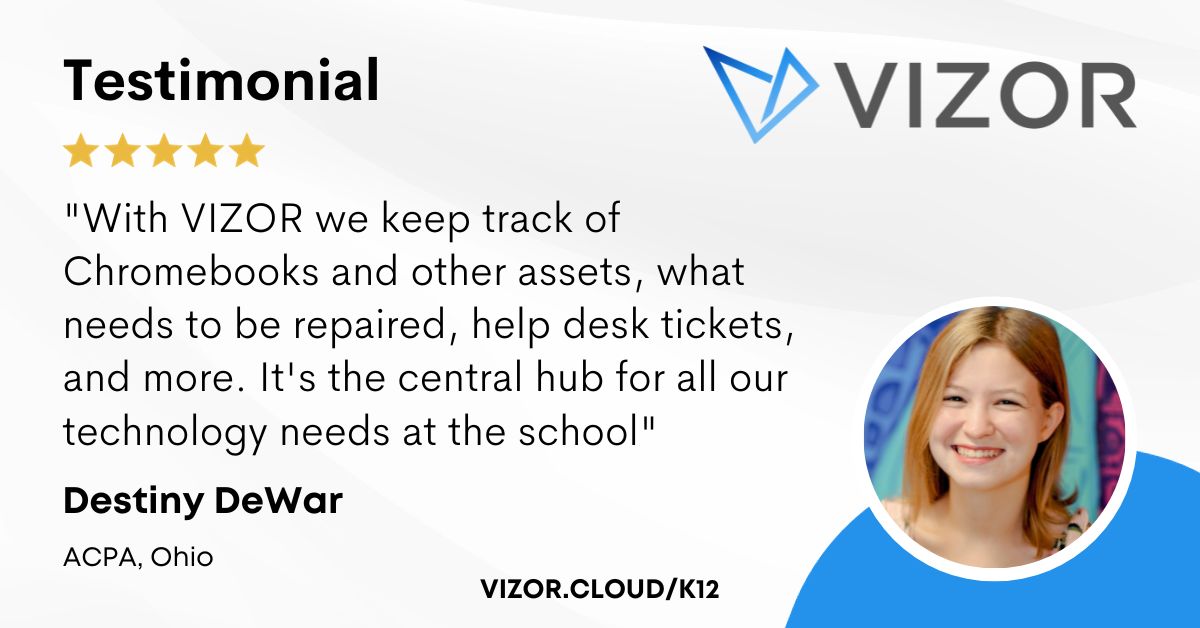3 Reasons Schools Need Chrome Device Management
It’s safe to say that Chromebooks are a big success in schools in the US. As of mid-2019, there were 30 million students using Chromebooks in classrooms in the country. However, school districts across the nation are still figuring out how to best acquire, distribute, and track the devices, without any overarching guidelines.
There are blogs about which Chromebook to purchase, which software to use in classrooms but rarely any blogs about how to manage the devices from an IT perspective. This can also be viewed as a superintendent or principal’s perspective. Why? It considers who has what, budgeting, associated costs, and the logistics of acquiring hundreds of Chromebooks. Here are 3 reasons schools need to manage their Chromebooks.
Importance of Chrome Device Management:
-
Know who has what
-
Manage Repairs
-
Track costs
1. Know who has what
Many schools have a one to one program whereas others purchase Chromebooks to remain in classrooms for students to share. Regardless, schools need to know where the devices are located or who is responsible for their safe return.
As a result, schools spend time deciding how they will distribute the Chromebooks to every student. Will it be by homeroom teacher? By grade? The use of a library system? Knowing who has what is important for holding students accountable, and even chargebacks. Chrome device management ensures proper distribution so the school can keep track of each device and who is responsible for it.
Pro Tip: Use a Chrome Device Manager that syncs with G suite to streamline the process
2. Manage Repairs
The need for repair management is inevitable. No matter how careful end users are, there will be repairs. But how do you manage repairs without tracking Chrome devices? You can’t. Part of Chrome Device Management is understanding the units that are in repair, what they’re in repair for, the associated costs, and tracking replacement devices.
This helps maintain an inventory of devices, forecast purchases when the number of students fluctuates and keeps an eye on faulty devices.
Pro Tip: Use barcode readers to help distribute and exchange devices.
3. Track Costs
You wouldn’t purchase a thousand units of anything without keeping track of its costs. It’s even more important for schools to keep track of the costs of the Chromebooks and their associated costs because it can get out of hand very quickly.
We mentioned repairs and chargebacks but what about accessories, replacement devices, software for the Chromebooks. If there is one person responsible just for Chromebooks, that is part of the associated costs. It all adds up. Schools have limited budgets and part of proper Chrome Device Management is tracking costs.
Pro Tip: It’s not enough to just identify the costs but try to save on costs. For example, taking advantage of warranties.
BONUS TIP: Incorporate IT in the purchasing process
Understanding the needs of the school is essential for budgeting and forecasting costs associated with the devices. Chrome device management helps schools with the number of Chromebooks in circulation, how many are in storage, how many need repairs, and costs associated with the devices. This is the expertise of the IT department. As they are already monitoring other devices, proper Chrome device management would need to be incorporated in their responsibilities and plans.
Pro Tip: Make IT part of the decision process of acquiring Chromebooks.
Share with your colleagues and explore chrome device management software.
How to simplify student device management in your school.
Need a School IT Asset and Device Management Solution?
- Google Admin Sync
- Simplify 1:1 Initiatives
- Track Device Repairs
- Barcode Check-In/Check-Out





